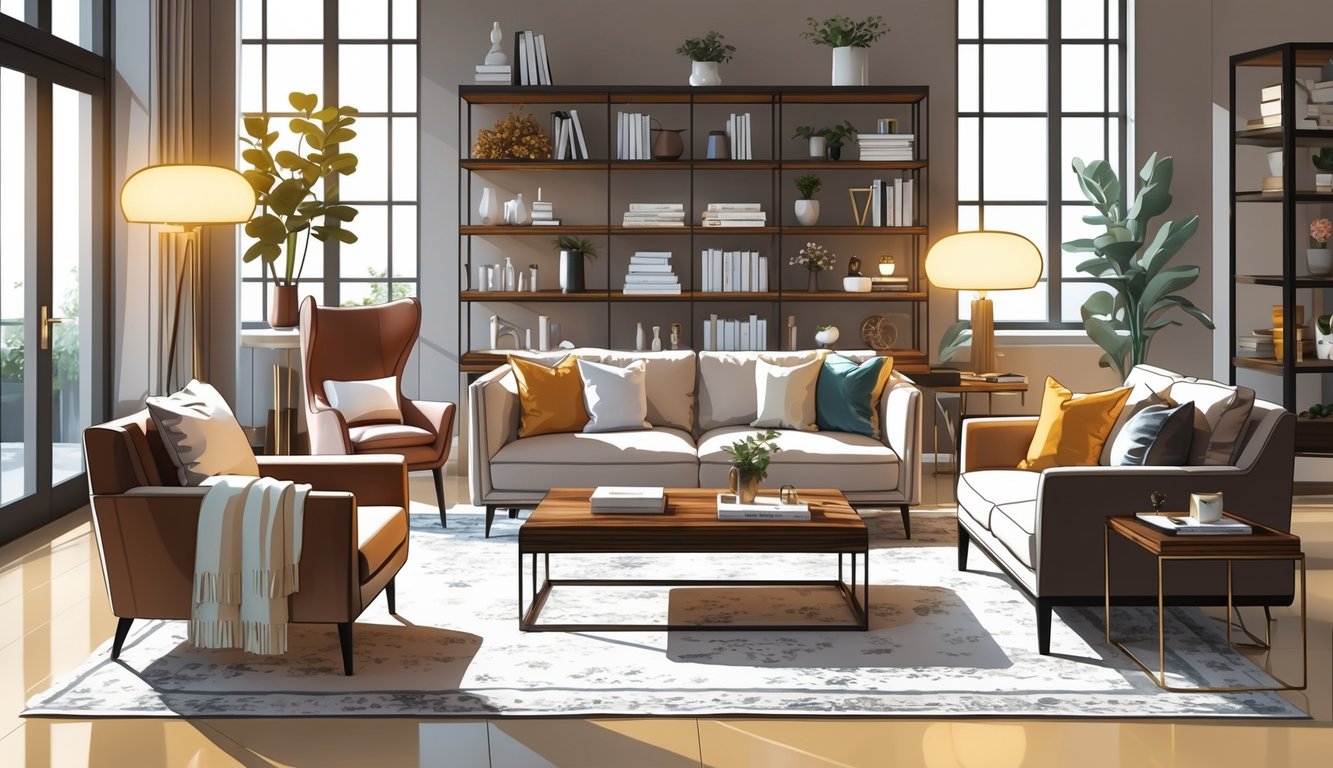
Leveraging Social Media and Designer Insights
Scrolling through Instagram, eating cereal that’s gone stale, I keep seeing this $6,000 modular sofa everywhere. Meanwhile, I’m sitting on my flatpack couch from last year, feeling very seen. Social media is a trap. Designers are right there with us, posting about their own furniture fails and regrets.
Interior Designers’ Regret Stories
Here’s what bugs me—actual designers, with degrees and clients, admit they’ve skipped “must-have” pieces and still think about it. Peggy Pratt, who’s installed more rooms than I’ve had birthdays, once told me she still regrets letting a client skip a good rug: “Everything slid around, frayed, nobody wanted to sit there.” Ouch.
Upholstered bed frames and solid-wood tables? Always on the regret list. Why? Sometimes it’s money, sometimes it’s just impatience. There was this stylist in the Midwest—she went with modular shelves instead of custom, and then they collapsed during a virtual tour. Brutal. “Buy once, buy well”—I hear that all the time from designers. A 2023 Furniture Today survey says 72% of pros regret skipping heirloom-quality pieces. That’s a lot of regret.
Popular Choices on Social Media
But if you scroll #MyDreamLivingRoom at 2am (don’t, seriously), it’s all boucle accent chairs and endless “dupe” lists for coffee tables nobody’s owned longer than a season. The classics—Eames chairs, leather sectionals, real-wood credenzas—barely get any love. Social data from IZEA says posts tagged “trend-aligned yet personalized” get 40% more engagement, but nobody ever mentions if the stuff lasts.
I’ve DM’d a bunch of stylists this year, asking if they actually like those cloud sofas after a month. Most dodge or say, “Wouldn’t buy again, but looks good on the grid.” Tables? Those survive. Everything else? Meh. Trends sell, but most designers end up regretting them. It’s almost a law of nature.
Frequently Asked Questions
Every designer I know has that moment—“Should I really have spent more on that one thing?” Then, suddenly, the regret hits. Usually over something dumb, like a chair that looks cool but feels like sitting on a rock. The “quick fix” options age a room faster than you’d think.
What are the top furniture pieces professional stylists recommend investing in?
Sofas haunt people. Seriously. Designers, clients, everyone. Janelle Wright (big-time NYC consultant) swears by a good sofa, a solid hardwood dining table, and real wood dressers. She says they “triple their looks” compared to cheap stuff. Nobody brags about a chipped laminate coffee table, right?
Workshops I’ve been to? People always groan about beds. Restoration Hardware frames are pricey, but they don’t squeak every time you move. I overheard a stylist say that, and honestly, I get it.
Are there any particular styles or types of furniture that are considered timeless?
What even counts as “timeless”? Some experts love mid-century teak—maybe because every “investment guide” says so—but my aunt’s 1940s library chair still looks awesome, even though the fabric’s shot. Shaker, Parsons, French Provincial—they all cycle back in every few years, even when maximalism is supposedly the thing.
Design historian Tobias Mattson claims minimalist lines last longest. “No one tosses a Wegner Wishbone chair; they pass it down.” I mean, he’s probably right.
Can skipping high-quality seating options impact the overall aesthetic of a space?
Let’s just say I learned this the hard way, thinking some flash-sale stools would make my living room cool. Nope. Cheap seating ruins a room, no matter how nice your rug is. Offices do this too—buying bulk chairs, then regretting it by Q3.
Ever jumped up from a $79 barrel chair at dinner? Embarrassing.
What are the common regrets people have when choosing furniture on a budget?
It’s always the same. People buy a “deal” without measuring, testing, or even sitting down. Half my clients end up reselling within months. Furniture Today (2025) says 68% of people regret at least one rushed purchase. Usually it’s something that looked fine online, then fell apart in person.
Swap a vintage armoire for a cheap veneer one and watch it hit the curb by spring. Happens every time.
How important is it to consider functionality when selecting statement furniture?
Functionality isn’t sexy, but ignore it and you’ll pay. Marble coffee tables look fancy, but spill wine once and you’ll wish you picked quartz or powder-coated steel. My friend Lauren’s $2,200 lucite bookcase? Holds three books and zero dignity—it bent under the weight.
My mentor once barked, “Form over function? No. Both or neither.” He was right.
In what ways can the right furniture choice add value to your home in the long run?
Honestly, who decided a Chippendale chest gets to outpace a car in value? But yeah, apparently it does—Sotheby’s dropped some 2022 numbers and, well, that old chest just keeps climbing while your sedan’s value nosedives. Go figure. I mean, some stuff—Eames chairs, Baker casegoods, those Danish names I can never pronounce—doesn’t just hang around, it turns into this weird hybrid of investment, family myth, and, I don’t know, bragging rights? Not that I’m planning to cash out my grandmother’s credenza, but you never know.
And then there’s that other end of the spectrum: floor models, “seasonal deals,” whatever. Those things barely make it past moving day. I can’t be the only one who’s dragged a particleboard bookcase to the curb and wondered why I didn’t just buy one real thing in the first place. Maybe I’m missing something, but every time I spot a walnut credenza with dovetail joints outliving another lease, I start questioning all my life choices.